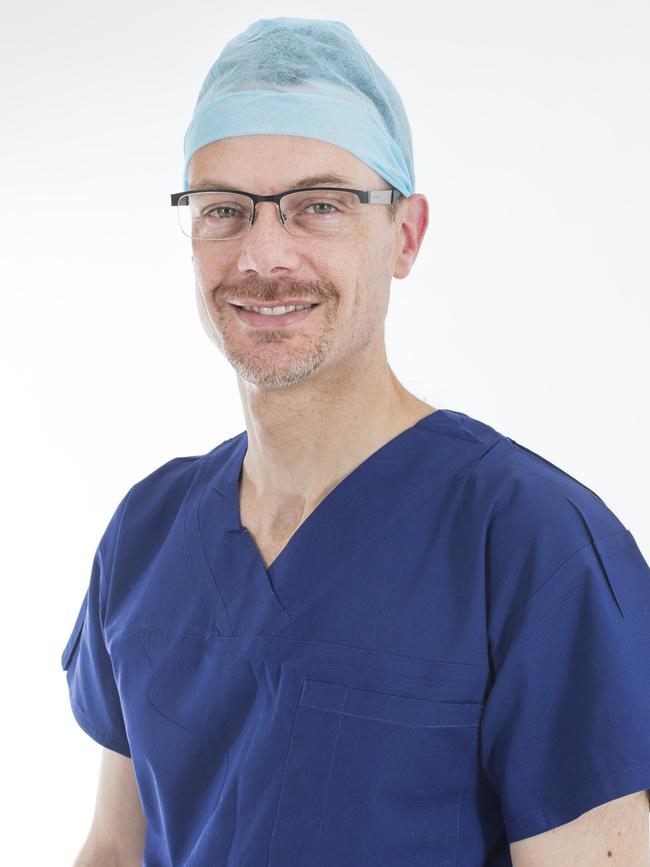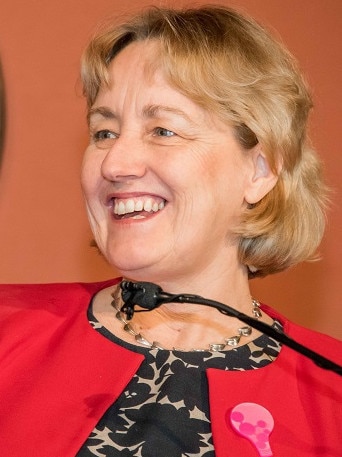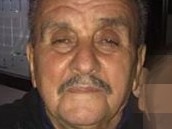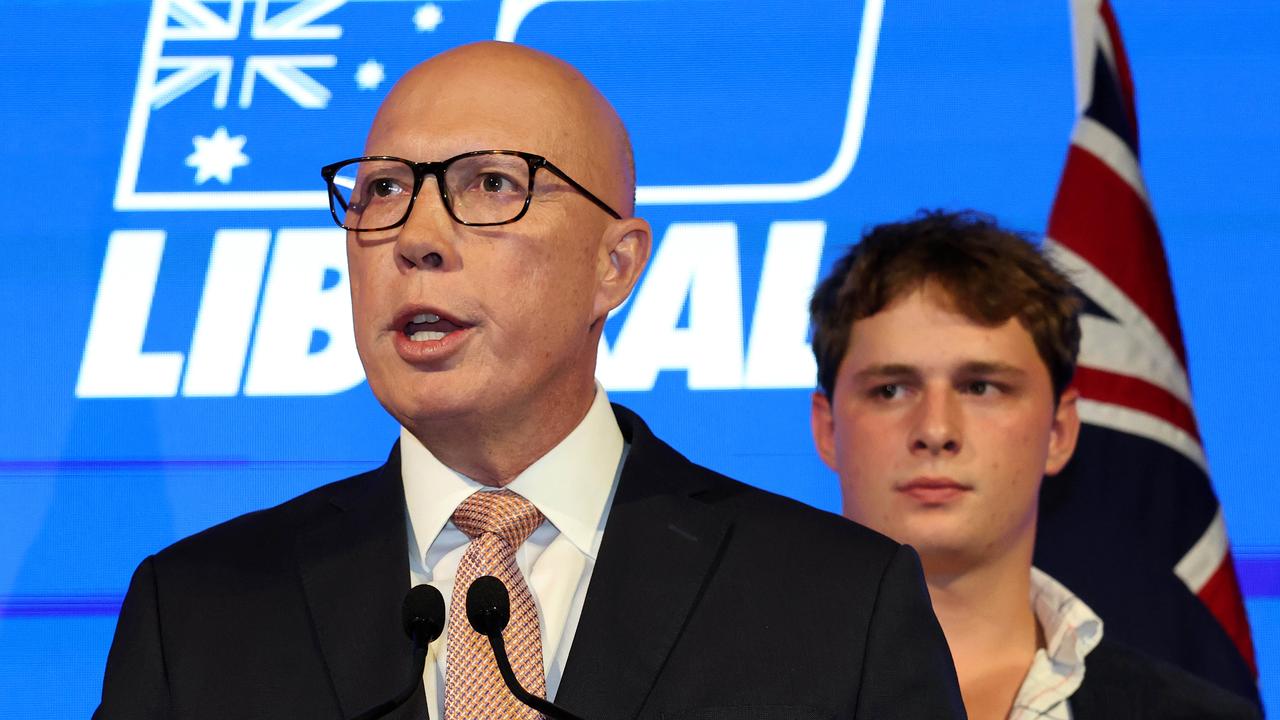Anatomy of a sclerotic system of medical regulation
A heart surgeon at one of the nation’s top hospitals is back under strict supervision.

In Australia’s small community of cardiothoracic surgeons, the news has hit like a shockwave. A senior practitioner at the Royal Prince Alfred Hospital, Michael Byrom, has been restricted by medical regulators from performing open-heart and lung surgery.
The news is not unexpected, but it is nevertheless surprising. Such action by a medical council to restrict the practice of a surgeon is unusual. The conditions, which according to Byrom have been imposed with his consent, are stringent. Byrom is restricted to performing only the simplest operations — inserting pacemakers and defibrillators — and he must undergo extensive supervision and retraining. He cannot supervise medical students and, under the guidance of a mentor, he must review his practice frequently with a particular focus on patient selection, technical skills, clinical judgment, intra-operative decision-making, and communication with peers and colleagues.
“This is not f..king around,” says one doctor who has read the conditions imposed by the Medical Council of NSW. “This is hard-nosed stuff. These conditions will be applied rigorously.”
The Medical Council says in correspondence that it imposed the conditions on Byrom’s practice “in order to protect the public”. It has declined to reveal the reasons the conditions were deemed necessary, but Byrom and the hospital that employs him, the Royal Prince Alfred in Sydney, say they were imposed with consent because the surgeon had not practised cardiothoracic surgery since July last year, and a program of reskilling was therefore necessary.
“The council believes, and I agree, that a period of supervised reskilling is necessary to return to full cardiothoracic surgical practice,” Byrom says.
Restricted surgery
The conditions come after the council commissioned a performance assessment of Byrom’s practice following a complaint from concerned surgeons to medical regulators. The surgeons documented “serious concerns over Dr Byrom’s performance providing an ongoing threat to patient safety”. The surgeons documented eight allegedly preventable deaths following surgery performed by Byrom, claims of multiple “near misses”, and a sustained campaign of denial by hospital administrators who repeatedly allowed the surgeon to return to unsupervised practice despite investigations finding his practice did not meet standards.
Inquirer is not suggesting that Byrom’s level of care was substandard, nor that he contributed to any patient deaths. Byrom cites the council-commissioned performance assessment report, which said that “despite the relentless complaints that have been made against (the surgeon), the assessors do not consider that at any time his practice represented a risk to the health or safety of the people of NSW”.
“I am pleased with the conclusions in the council report,” the surgeon says. “Once again, my surgical results have been found to be consistent with my surgical peers. In stark contrast to the allegations made about me, the report found no evidence of a risk to the safety of my patients.
“I am also pleased that the Medical Council found that my response to the allegations ‘not only met, but exceeded, what would reasonably have been expected’. They found that ‘the education (Byrom) undertook allowed him to develop expertise in the areas of quality control, communication, teamwork and surgical leadership far in excess of many of his peers’.”
The Byrom affair and its devastating fallout has shone a spotlight on Australia’s system of medical regulation. Those who raise red flags often pay a heavy price, facing a hostile environment when lodging concerns about the performance of a colleague. In the Byrom case, concerned surgeons were pitted against hospital administrators who questioned their motives. Regulators are routinely reluctant to investigate complaints. State-based regulators operate effectively as an arm of health ministries, with government investigating itself.
A national system of mandatory reporting is in place, but the bar is set high. Surgeons have raised questions in the Byrom case as to why RPA administrators failed to mandatorily report the surgeon to the Australian Health Practitioner Regulation Agency after investigations the hospital commissioned found his practice to be below standards. Byrom says the findings of these investigation reports have been rejected by the Medical Council.
But RPA’s management of the Byrom saga continues to cause concern in the medical community. “It would appear that the clinical governance processes here were not optimum,” says Tony Sara, president of the doctors union in NSW, the Australian Salaried Medical Officers Federation. “The regulator has formed a view and has markedly restricted the practitioner’s practice. And it is the ultimate arbiter.”
The saga that has damaged the reputation of RPA’s cardiothoracic department began in mid-2016 when four patients died following surgery performed by Byrom. Several of these operations were complex, but according to independent investigators a concerning pattern emerged in the surgeon’s practice: issues of “technical performance, communication and leadership”, with a “persistent lack of insight into these issues”.
Following the 2016 deaths, Byrom self-reported to AHPRA and was placed on a clinical oversight program. He returned to unsupervised clinical practice in October 2016 but a series of incidents again occurred. The patients all survived, but two of Byrom’s colleagues were so worried that they lodged their concerns with the RPA executive.
Sydney Local Health District chief executive Teresa Anderson then arranged for two senior heart surgeons, Julian Smith and Michael Gardner, to undertake a review. The review found that Byrom “does not meet the standard reasonably expected of a cardiothoracic surgeon of an equivalent level of training or experience” and recommended an intensive remediation program with formal oversight.


The Health Practitioner National Law (NSW) stipulates that medical professionals or employers who become aware of “notifiable conduct” by a practitioner must make a mandatory report to AHPRA. Notifiable conduct is defined in the act as conduct that “places the public at risk of harm by practising the profession in a way that constitutes a significant departure from accepted professional standards”.
AHPRA’s guidelines stipulate that the departure from accepted professional standards must be significant and must place the public at risk of harm. RPA administrators did not make a mandatory notification following the Smith-Gardner investigation findings. NSW Health said RPA executives were never required to mandatorily report, saying Byrom never represented a risk to the health and safety of the public.
“There was therefore no basis for making any mandatory notification regarding Dr Byrom to relevant regulatory authorities,” NSW Health said in a statement.
Following the first Smith-Gardner report, Byrom returned to unrestricted practice in October 2017.
Concerns raised
Soon after this, another operation turned catastrophic. Byrom performed a tracheoplasty, which is a tightening of the trachea, on a patient against the advice of a senior surgeon. The operation was unsuccessful and the patient died from hypoxic brain injury and multi-organ failure following five weeks on life support.
Weeks after that, a patient had to be flown by helicopter to RPA from Concord Hospital following routine thoracic surgery. During the surgery, an artery in the chest wall began to bleed, but Byrom allegedly failed to recognise the bleeding. He returned the patient to the intensive care unit, where the patient continued to bleed for a further 24 hours. The patient eventually had to be flown to RPA, where another surgeon took the patient to theatre and corrected the problem. By the time he arrived, the patient lost an extraordinary 14 litres of blood — almost three times his total blood volume — but ultimately survived due to the corrective surgery.
The incident shocked senior clinicians. A formal incident report was lodged but investigators at RPA found Byrom was not at fault. The surgeon who lodged the incident report was later subject to disciplinary action.
Concerns over Byrom’s practice continued, however, within the RPA cardiothoracic department. Following the late 2017 incidents, Smith and Gardner were commissioned to perform a second review, which reported in August 2018 and again found Byrom did not meet the standard reasonably expected. Byrom says the Medical Council found that the two Smith-Gardner reports were “flawed and erroneous”.
Following the second report, Byrom was suspended from operating by RPA’s head of cardiothoracic surgery, Paul Bannon.
But immediately following Bannon’s announcement, in early September 2018, the suspension was reversed by Anderson. That decision prompted two senior surgeons, who were increasingly subjected to aggressive scrutiny over their actions in reporting surgical issues, to resign from the hospital.
“There has very clearly, beyond any shadow of a doubt, been systematic harassment, bullying and intimidation of concerned surgeons to the extent that they felt so helpless in pursuing public safety concerns that they were left with no alternative other than to resign,” says one surgeon familiar with the events. “Their concerns were around a surgeon who was repeatedly subject to escalating levels of supervision between multiple episodes of suspension, between each of which there were deaths. Yet administrators still put Dr Byrom back to full duties.”
When Byrom returned to surgery at RPA, within weeks another incident occurred. By this time, concerns that the hospital was failing to protect patient safety hit the desk of NSW Health Minister Brad Hazzard. Hazzard requested a copy of the Smith-Gardner reports, and ordered a review of RPA’s cardiothoracic department.
But just weeks after Hazzard was notified, another incident unfolded. A patient with lung cancer was admitted for surgery. The patient, 72-year-old Dimitrios Kyriazopoulos, had two lobes of his right lung removed by Byrom. Post-operatively, an air leak developed from the lung, progressing to an infection within the chest. Byrom unsuccessfully attempted to drain the chest infection and the patient initially appeared to be improving. However, Kyriazopoulos’s infection progressed over the course of two weeks to sepsis. He was scheduled to be returned to theatre by another surgeon but the operation was inexplicably cancelled and Kyriazopoulos had a catastrophic airway bleed later that week. He died of hypoxic brain injury.
An analysis performed by the hospital of the death found no root cause, and concluded Byrom was not to blame. Despite this, a mandatory report of the events was lodged with the AHPRA. The investigating arm of AHPRA in NSW, the Health Care Complaints Commission, declined to assess the complaint, and sent it back to the NSW Health. A coronial inquest into Kyriazopoulos’s death is pending.

Further analysis
Following the Kyriazopoulos death, and the second Smith-Gardner report critical of Byrom’s practice, in January last year Anderson commissioned a further review into Byrom’s performance.
That review by surgeons David Marshman and Bruce French, both employees of NSW Health, found Byrom’s practice was safe, appropriate and commensurate with his experience.
A memo from Anderson to surgeons, referring doctors, anaesthetists and nursing staff in February said the third review by surgeons “had no concerns about Dr Byrom’s clinical outcome data”. The memo noted: “The supervision reports provided to the panel did not raise any issues of concern and it is the panel’s view that Dr Byrom is fit to perform his role as a cardiothoracic surgeon without restrictions.”
Legal advice provided to the NSW government by a senior counsel found there were “some concerns” of apprehended bias in relation to the third review. French had previously acted as Byrom’s mentor. Following the French-Marshman review, Byrom returned to unrestricted practice at RPA — the fourth time he had been allowed to return to practice following suspensions.
Four months later, two further deaths occurred following coronary bypass surgery. The family of one of the dead patients, Michael Glenn, is now investigating legal action against RPA.
The two deaths last year were reported to the HCCC, together with formal complaints concerning six other deaths. The regulator declined to investigate.
Following an assessment, the HCCC concluded “there is not evidence of significant clinical departures or issues which if substantiated would provide grounds for suspension or cancellation”.
“On this basis further formal investigation is not warranted,” HCCC executive director of complaint operations Tony Kofkin said in a letter. Kofkin declined to investigate allegations of negligent management of the matter by Anderson, referring the matter to the NSW Ministry of Health.
At this point, the HCCC referred complaints over Byrom’s performance to the Medical Council. Byrom must now must find a mentor willing to supervise him in line with the conditions imposed by the Medical Council.
In the meantime, the families of those who have died following surgery are still waiting for answers. Kyriazopoulos’s son, Kris, mourns the loss of his father daily along with his brothers. “Our father was an honest, hardworking, and loving family man,” he says. “Dad had a heart of gold. My brothers and I genuinely believe that there are a multitude of issues that may have contributed to our father’s death and we remain hopeful that all issues are thoroughly investigated.
“We have yet to formally hear from Dr Byrom and the RPA since our father’s death. To date, RPA has not been forthcoming with any development, nor have they reached out to our family to provide and demonstrate compassion and support.
“We simply want accountability, clear understanding on the whole event, with a full review that will help implement revised processes and procedures, that will safeguard all future patients and their families from shock, disbelief and emotional suffering.”
RPA has not committed to such a review. The SLHD says it will “continue to support Dr Byrom throughout the reskilling period”. The only answer the Kyriazopoulos family is now likely to receive will come in the formal confines of the NSW Coroner’s Court.




To join the conversation, please log in. Don't have an account? Register
Join the conversation, you are commenting as Logout